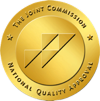Wet Brain sits at a tragic intersection of neurology and addiction, specifically alcohol addiction. In the process of understanding Wet Brain, we will explore its causes, effects, reversibility, and its lethal potential.
What Is Wet Brain?
Wet Brain is what happens when your brain can’t get enough of a vital nutrient, thiamine, because heavy drinking. You end up with Wet Brain after years of hitting the bottle hard, which messes with your body’s ability to incorporate thiamine. It’s as if your body and brain are screaming for this nutrient, but the alcohol keeps cutting the line. Without enough thiamine, your brain starts to malfunction, leading to all these problems.
First off, you might start to get really confused, walk like you’re on a boat rocking in high seas, and your eyes might start doing their own weird dance. If things get worse and move into what’s called Korsakoff’s psychosis, your memory begins to act like a sieve — you can’t hold onto new stuff and might start making up stories to fill in the blanks, without even realizing you’re doing it. It’s like your brain is trying to play a game of catch-up, but it’s forgotten the rules.

The Wet Brain Mechanisms at Play
Wet Brain actually comprises two stages: Wernicke’s encephalopathy, followed by Korsakoff’s psychosis. Imagine Wernicke’s as a trailer to movie that is Korsakoff’s. Stage 1 lays the groundwork with symptoms like confusion, loss of muscle coordination, and eye movement troubles.
If unchecked, this progresses to Stage 2 Korsakoff’s psychosis. Here there is severe memory issues, fabricating events (confabulation), and difficulty acquiring new information. It’s as if the brain’s wiring for memory and coordination gets progressively frayed, then disconnected.
Can Wet Brain Be Fatal?
In the stark terms of mortality, yes, Wet Brain can be fatal. Without treatment, Wernicke’s encephalopathy can lead to coma or death. Even with intervention, the transition to Korsakoff’s psychosis signifies lasting brain damage.
The risk of death can also come from the complications of the symptoms themselves, such as injuries from falls due to poor coordination.
Is Wet Brain Reversible?
The answer is a hopeful “partly.” Early intervention with thiamine supplements can reverse or mitigate the symptoms of Wernicke’s encephalopathy, but the leap to Stage 2 (Korsakoff’s psychosis) is a more treacherous path. Once the damage has entrenched itself, it becomes a matter of managing symptoms rather than outright reversal. This underscores the importance of early detection and intervention.
Early Detection of Wet Brain
The initial phase of Wet Brain is a critical window of opportunity. Symptoms such as confusion, unsteady gait, and abnormal eye movements signal the brain’s distress call for thiamine. At this point, the body’s response to thiamine supplementation can be strikingly helpful.
With prompt administration, it’s possible to halt the progression of the disease and even reverse many symptoms, allowing people to reclaim aspects of their neurological function that was slipping away.
Recognizing the early signs of thiamine deficiency and understanding the risk factors associated with heavy alcohol use can save your life and possibly reverse the effects of wet brain. Here are some of the early signs. It is vital to reach out for help at the first signs of cognitive or neurological decline.
- Fatigue and Weakness: Feeling unusually tired or weak without a clear reason, similar to how you feel after pulling an all-nighter.
- Loss of Appetite: Your favorite foods just don’t seem appealing anymore, like when you’re sick but without the cold or flu symptoms.
- Weight Loss: Dropping pounds without trying, as if you were on a diet you didn’t sign up for.
- Confusion: Getting mixed up in situations that normally wouldn’t puzzle you, akin to trying to solve a math problem and forgetting basic steps.
- Memory Issues: Struggling to remember things that happened recently, like misplacing your keys and then forgetting you were looking for them.
- Muscle Coordination Problems: Walking or moving with a bit of a wobble, almost like trying to navigate a room in the dark.
- Irritability: Quick to snap or get annoyed over minor things, similar to how you feel on a really bad day.
The Role of Comprehensive Care
Beyond thiamine supplementation, the approach to managing and potentially reversing aspects of Wet Brain involves a holistic view of health. This means addressing nutritional deficiencies, managing alcohol addiction, and probably getting professional addiction treatment. Cognitive exercises, occupational therapy, and support groups are all part of getting better.
The Broader Canvas: Alcohol Addiction
To understand Wet Brain fully, we have to understand alcohol addiction. Alcohol use disorder (AUD) is a medical condition characterized by an inability to stop or control alcohol use despite adverse social, occupational, or health consequences. The path from a glass of wine at dinner to the depths of addiction is winding and uniquely personal. Wet Brain is one of the more severe medical conditions that can arise from alcohol addiction.
It’s a reminder just how dangerous alcohol use disorder truly is.
Help with Wet Brain at EagleCrest Recovery
If you or someone you know is navigating the challenges of alcohol addiction, remember that early intervention is key. EagleCrest Recovery in Benton County, Arkansas, offers a compassionate and comprehensive detox facility and full residential treatment dedicated to helping individuals overcome addiction and prevent conditions like Wet Brain.
Our team of experts provides personalized care and support, ensuring a path towards recovery and a healthier future. Don’t wait for things to get worse. Reach out to EagleCrest Recovery today and take the first step towards reclaiming your life.


